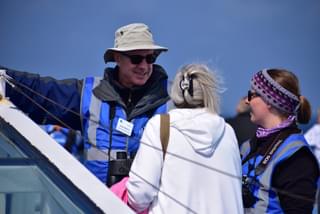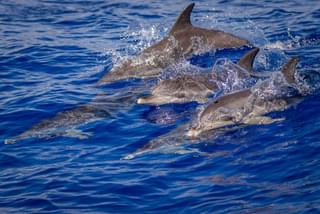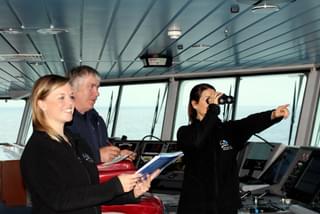Common dolphin
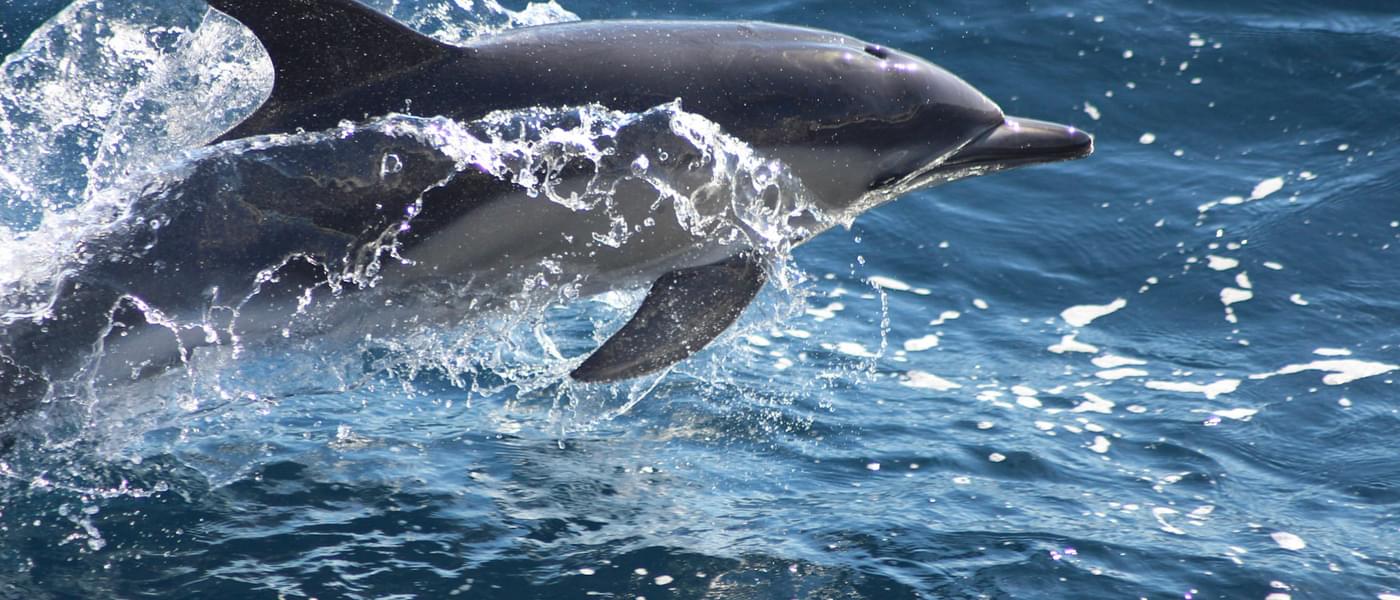
Delphinus delphis
1.7 - 2.5m
Yellow and grey
Teeth
Dorsal fin
Common dolphins are, as the name suggests, the most common in the world. They have a beautiful, striking pattern of yellow and grey on their flanks, creating a distinctive hourglass shape and making them easy to spot and identify. Their flanks are dark, with a 'V' shape appearing just below the dorsal fin. They are 1.7 – 2.5m long, making them one of the smaller dolphins.
Key features:
- Long, slender beak, dark stripe through eyes
- Curved, dark dorsal fin with a paler centre
- Yellow and grey hourglass patterning on flanks
- Active, often porpoising energetically
Behaviour
In European waters, common dolphins usually travel in groups of 1- 500 individuals, but pods of 1000+ animals are not uncommon. They are highly social and often form mixed pods, particularly with striped dolphins. Common dolphins are very energetic and acrobatic, often leaping out of the water, breaching, splashing, bow and wake riding and occasionally even somersaulting. They are attracted to the bows of ships, giving passengers an exhilarating display. When feeding, they herd fish into a tight ball so that they can catch their prey more easily.
Threats
There have been regular strandings of common dolphins along the coastlines of Cornwall and Devon, with many of these appearing to be caused by entanglement in fishing gear. As common dolphins feed on fish species which are also targeted by fisheries, they are attracted to areas where fishing is taking place and are accidentally caught. Fishing techniques such as purse seine and trawling are particularly dangerous to dolphins. Other threats to dolphins include pollution, decrease in available prey and habitat degradation.
Distribution
Common dolphins can be found all over the world in temperate and tropical regions. They are mainly seen offshore, however coastal populations exist around the UK.
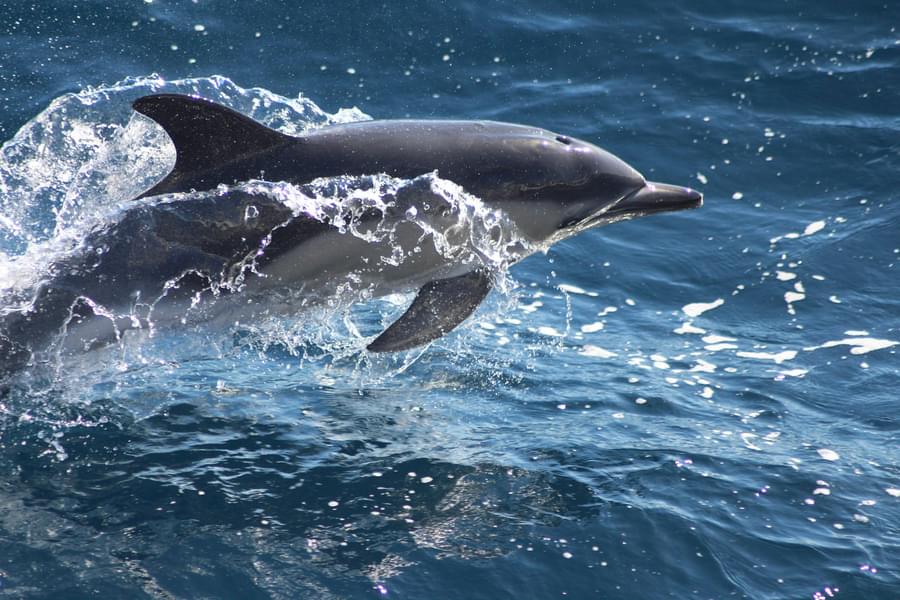
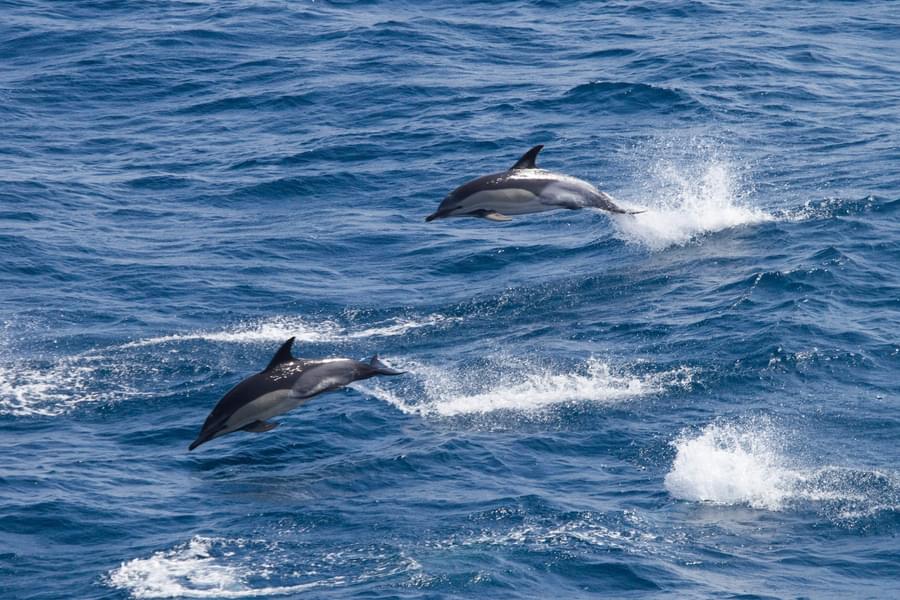
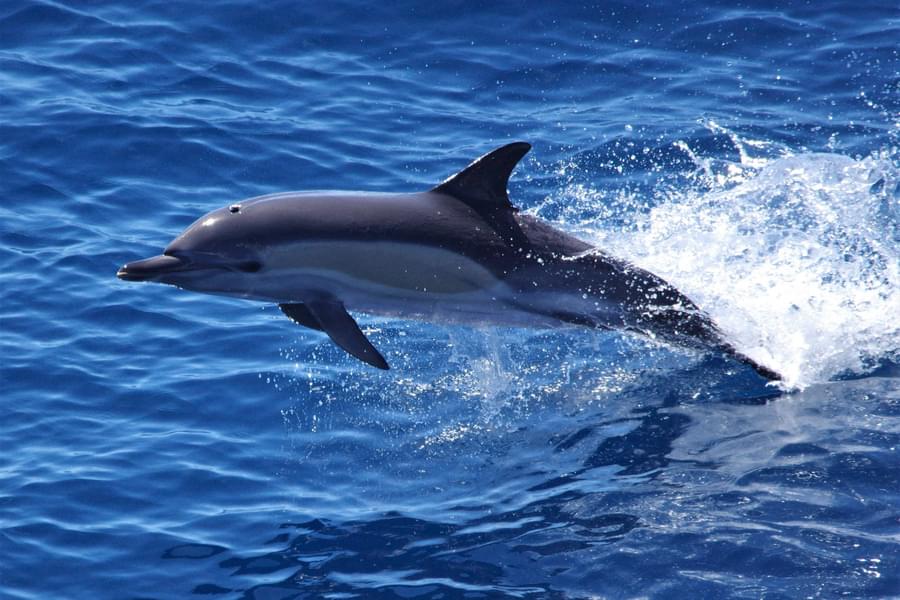
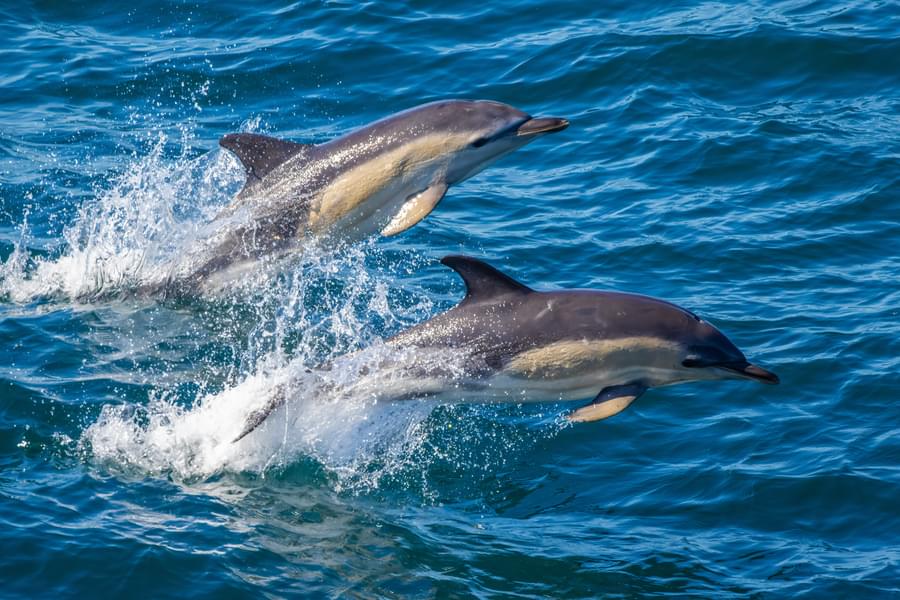
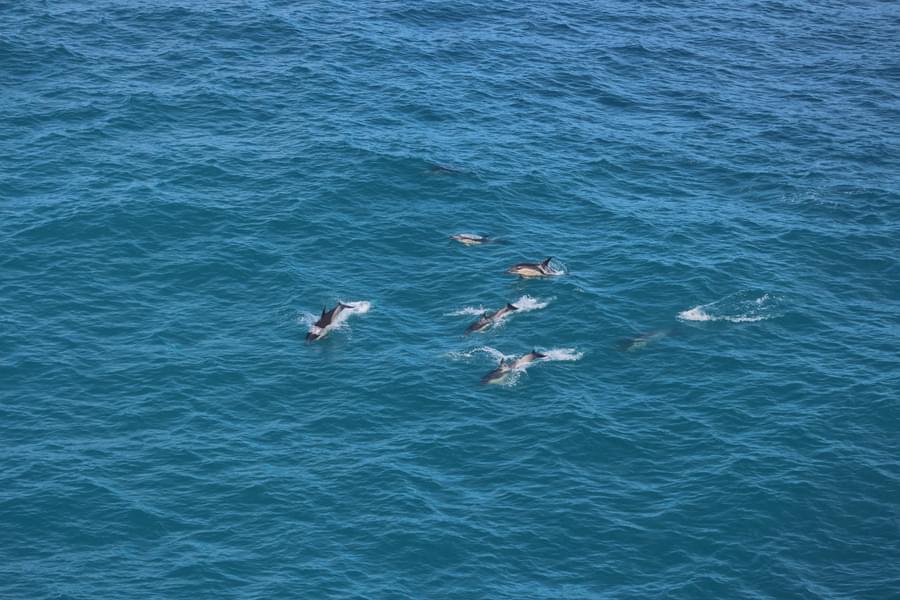
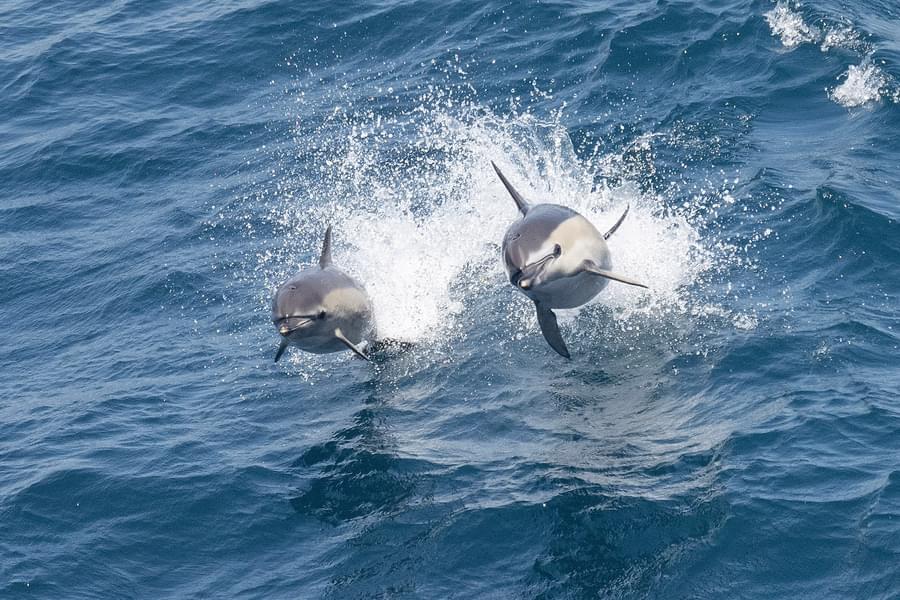
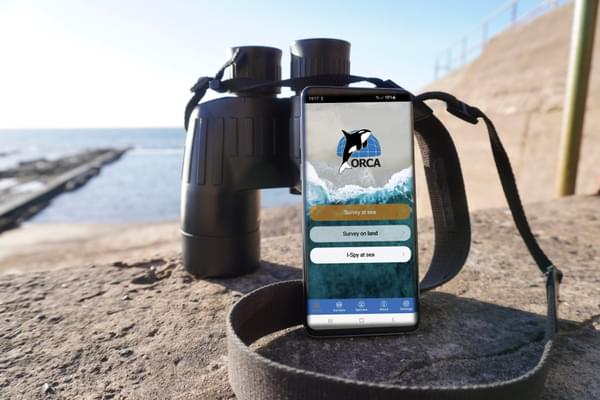
Study whales and dolphins as an ORCA OceanWatcher
The ORCA OceanWatchers online training course, along with a bespoke app, will enable everyone to collect data about whales, dolphins and porpoises. And it can be collected from anywhere that you can see the sea - whether that’s from your local beach, on holiday at the coast, scanning the seas from a cruise ship, travelling via ferry, or from your own boat.
You may also be interested in

